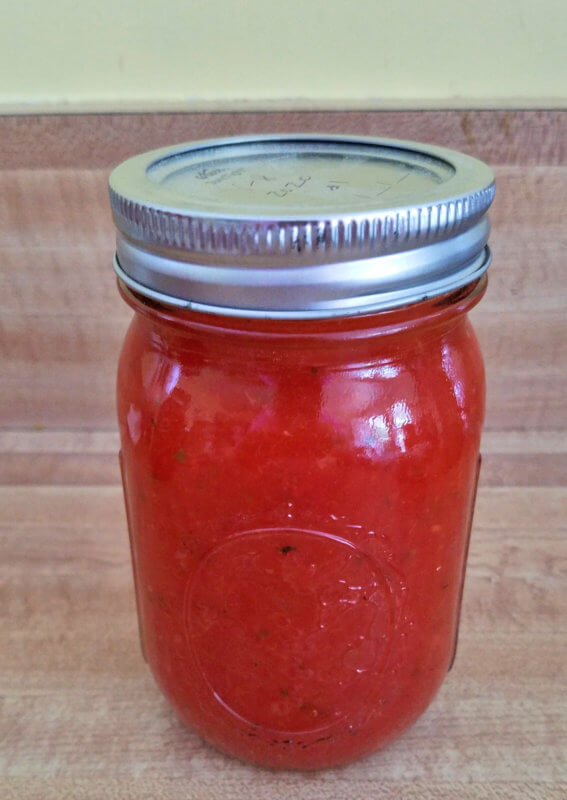Canning fresh tomatoes
There is no fruit as versatile as a tomato fresh from the vine. Canning the surplus further expands its versatility to hearty winter dishes, sauces, soups and juice.
You will need canning jars (inspect for cracks and roughness on the rim), screw bands, sealing lids, a canning funnel, a jar lifter or canning tongs, water bath canner with rack, and a food mill or cone strainer (for puree).

Wash jars, lids and rings in soapy water. Rinse well. Cover with water and bring to a simmer in a pot of water until ready to fill. Do not boil.
For all the following instructions, add two tablespoons of lemon juice to each quart jar (one tablespoon per pint) to ensure a safe acidity level.
For whole or cut tomatoes: submerge clean tomatoes in boiling water for 30 to 60 seconds, or until the skins begin to crack. Immerse for a few seconds in cold water. Drain. Cut out stems. Slip off the skins. Cut as desired.
There are two methods for filling jars. For hot pack, add tomatoes to a pot of water. Simmer for five minutes. Ladle into jars. For cold pack, place tomatoes into jars. For either method, top off jars with hot water, leaving a half-inch headspace.
For tomato puree: core and quarter the unpeeled tomatoes. Simmer over medium heat for 22 minutes. Adjust heat as needed to prevent burning. Press tomatoes through a food mill or cone strainer to remove skins and seeds. Fill jars with hot puree, leaving a half-inch headspace.
The canning process: fill your canner (with rack) about half full of water for pints and adjust for quarts so water will be one inch above the jars. Bring water to a simmer and maintain simmer. Set a kettle to boil in case you need extra water.
Run a knife up and down the edge of the jar to release trapped air bubbles. Wipe the jar rim with a clean, damp cloth; add the lid and turn the screw band on just until you feel resistance. Use tongs to lower each jar into the simmering canner.
Add boiling water to the canner if needed to cover jars by at least one inch of water. Cover.
Bring to a boil, and then keep the water at a steady but gentle boil for 45 minutes for quarts, or 40 minutes for pints. Remove jars to a towel, leaving at least an inch of space between each.
Let cool for 12 to 24 hours. You may hear a popping sound as the jars seal. Check each jar by removing the band and pressing on the center of the lid. A sealed jar lid has no flex to it, and you can’t lift it off.
Refrigerate or freeze any unsealed jars. Label and store sealed jars in a cool, dark place. When the north wind blows, put on a pot of soup or chili to simmer, and enjoy the delicious pleasure that comes with preserving your bounteous harvest.
For more information on canning tomatoes, download the USDA home canning guide.
Joyce Amsden is a UVM Extension Master Gardener Intern from Sharon, Vermont.
